Attached files
| file | filename |
|---|---|
| EX-99.2 - EX-99.2 - AVROBIO, Inc. | d892111dex992.htm |
| 8-K - 8-K - AVROBIO, Inc. | d892111d8k.htm |
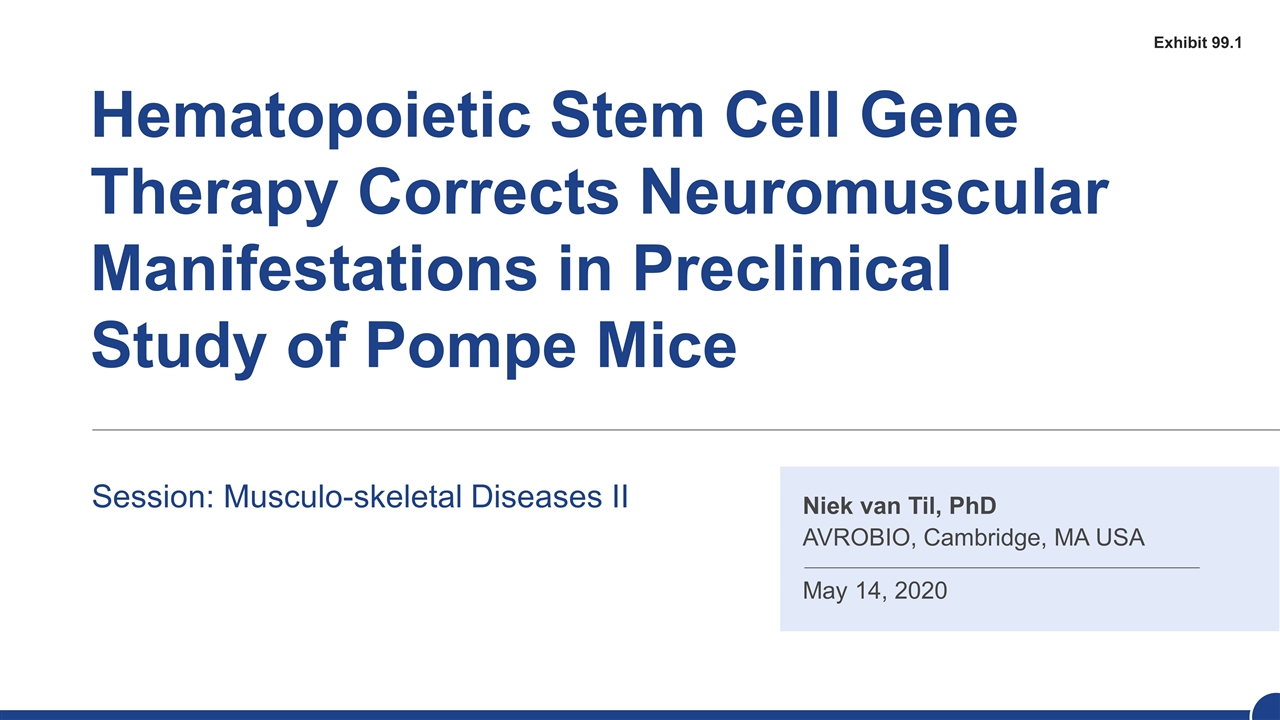
Session: Musculo-skeletal Diseases II Hematopoietic Stem Cell Gene Therapy Corrects Neuromuscular Manifestations in Preclinical Study of Pompe Mice Niek van Til, PhD AVROBIO, Cambridge, MA USA May 14, 2020 Exhibit 99.1
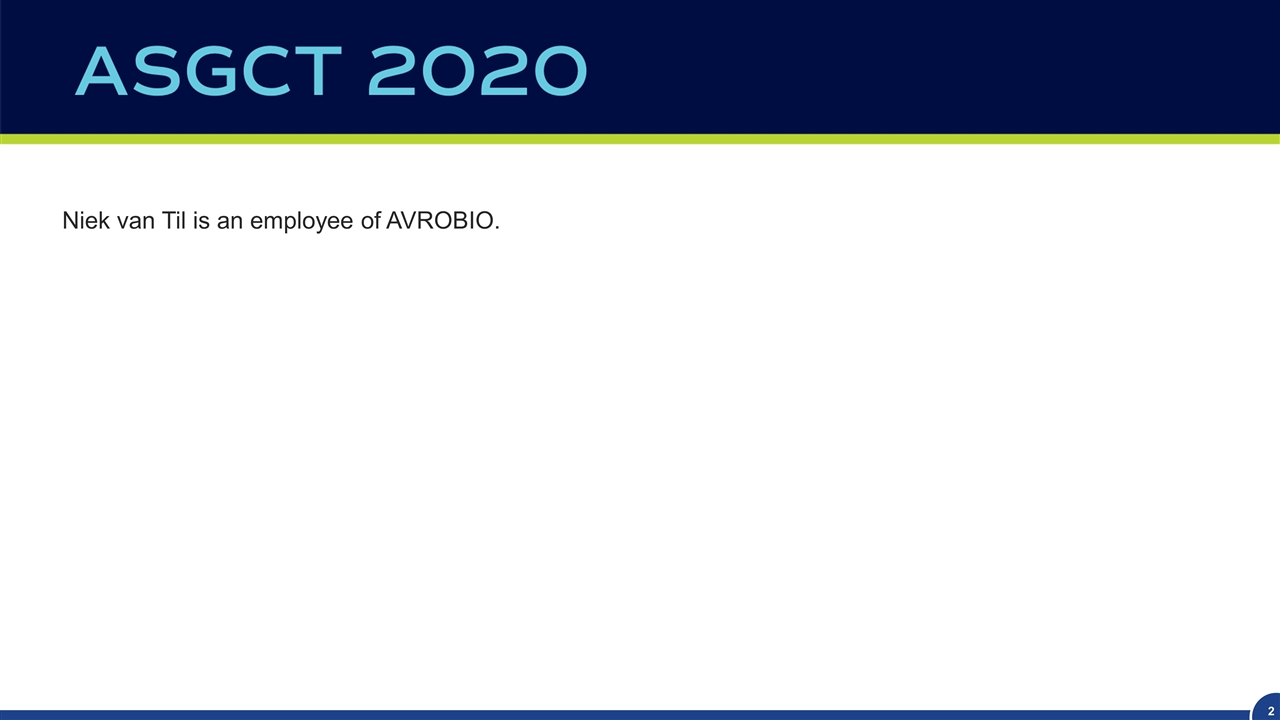
Pompe Program Team 3/25/2020 NSG Study What’s Important Now Monthly Report Niek van Til is an employee of AVROBIO.
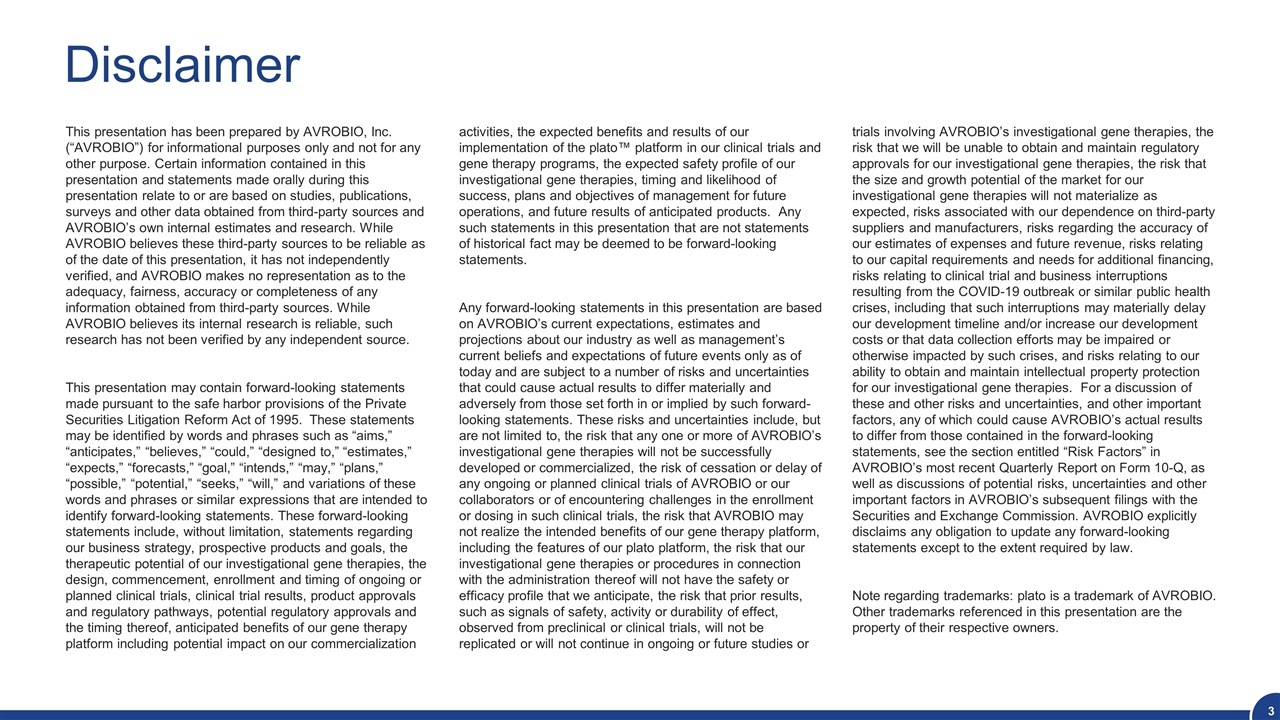
Disclaimer This presentation has been prepared by AVROBIO, Inc. (“AVROBIO”) for informational purposes only and not for any other purpose. Certain information contained in this presentation and statements made orally during this presentation relate to or are based on studies, publications, surveys and other data obtained from third-party sources and AVROBIO’s own internal estimates and research. While AVROBIO believes these third-party sources to be reliable as of the date of this presentation, it has not independently verified, and AVROBIO makes no representation as to the adequacy, fairness, accuracy or completeness of any information obtained from third-party sources. While AVROBIO believes its internal research is reliable, such research has not been verified by any independent source. This presentation may contain forward-looking statements made pursuant to the safe harbor provisions of the Private Securities Litigation Reform Act of 1995. These statements may be identified by words and phrases such as “aims,” “anticipates,” “believes,” “could,” “designed to,” “estimates,” “expects,” “forecasts,” “goal,” “intends,” “may,” “plans,” “possible,” “potential,” “seeks,” “will,” and variations of these words and phrases or similar expressions that are intended to identify forward-looking statements. These forward-looking statements include, without limitation, statements regarding our business strategy, prospective products and goals, the therapeutic potential of our investigational gene therapies, the design, commencement, enrollment and timing of ongoing or planned clinical trials, clinical trial results, product approvals and regulatory pathways, potential regulatory approvals and the timing thereof, anticipated benefits of our gene therapy platform including potential impact on our commercialization activities, the expected benefits and results of our implementation of the plato™ platform in our clinical trials and gene therapy programs, the expected safety profile of our investigational gene therapies, timing and likelihood of success, plans and objectives of management for future operations, and future results of anticipated products. Any such statements in this presentation that are not statements of historical fact may be deemed to be forward-looking statements. Any forward-looking statements in this presentation are based on AVROBIO’s current expectations, estimates and projections about our industry as well as management’s current beliefs and expectations of future events only as of today and are subject to a number of risks and uncertainties that could cause actual results to differ materially and adversely from those set forth in or implied by such forward-looking statements. These risks and uncertainties include, but are not limited to, the risk that any one or more of AVROBIO’s investigational gene therapies will not be successfully developed or commercialized, the risk of cessation or delay of any ongoing or planned clinical trials of AVROBIO or our collaborators or of encountering challenges in the enrollment or dosing in such clinical trials, the risk that AVROBIO may not realize the intended benefits of our gene therapy platform, including the features of our plato platform, the risk that our investigational gene therapies or procedures in connection with the administration thereof will not have the safety or efficacy profile that we anticipate, the risk that prior results, such as signals of safety, activity or durability of effect, observed from preclinical or clinical trials, will not be replicated or will not continue in ongoing or future studies or trials involving AVROBIO’s investigational gene therapies, the risk that we will be unable to obtain and maintain regulatory approvals for our investigational gene therapies, the risk that the size and growth potential of the market for our investigational gene therapies will not materialize as expected, risks associated with our dependence on third-party suppliers and manufacturers, risks regarding the accuracy of our estimates of expenses and future revenue, risks relating to our capital requirements and needs for additional financing, risks relating to clinical trial and business interruptions resulting from the COVID-19 outbreak or similar public health crises, including that such interruptions may materially delay our development timeline and/or increase our development costs or that data collection efforts may be impaired or otherwise impacted by such crises, and risks relating to our ability to obtain and maintain intellectual property protection for our investigational gene therapies. For a discussion of these and other risks and uncertainties, and other important factors, any of which could cause AVROBIO’s actual results to differ from those contained in the forward-looking statements, see the section entitled “Risk Factors” in AVROBIO’s most recent Quarterly Report on Form 10-Q, as well as discussions of potential risks, uncertainties and other important factors in AVROBIO’s subsequent filings with the Securities and Exchange Commission. AVROBIO explicitly disclaims any obligation to update any forward-looking statements except to the extent required by law. Note regarding trademarks: plato is a trademark of AVROBIO. Other trademarks referenced in this presentation are the property of their respective owners.
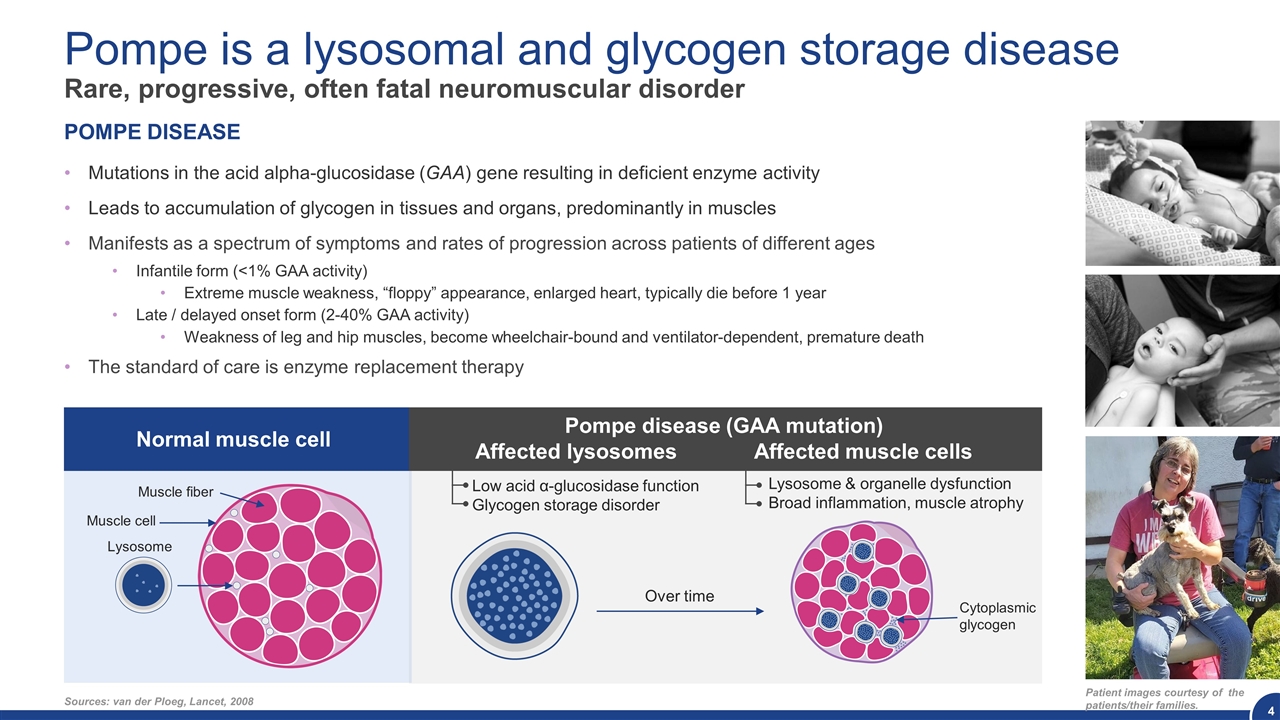
Pompe is a lysosomal and glycogen storage disease Rare, progressive, often fatal neuromuscular disorder POMPE DISEASE Mutations in the acid alpha-glucosidase (GAA) gene resulting in deficient enzyme activity Leads to accumulation of glycogen in tissues and organs, predominantly in muscles Manifests as a spectrum of symptoms and rates of progression across patients of different ages Infantile form (<1% GAA activity) Extreme muscle weakness, “floppy” appearance, enlarged heart, typically die before 1 year Late / delayed onset form (2-40% GAA activity) Weakness of leg and hip muscles, become wheelchair-bound and ventilator-dependent, premature death The standard of care is enzyme replacement therapy Lysosome Normal muscle cell Pompe disease (GAA mutation) Affected lysosomes Affected muscle cells Over time Low acid α-glucosidase function Glycogen storage disorder Lysosome & organelle dysfunction Broad inflammation, muscle atrophy Cytoplasmic glycogen Sources: van der Ploeg, Lancet, 2008 Muscle cell Muscle fiber Patient images courtesy of the patients/their families.
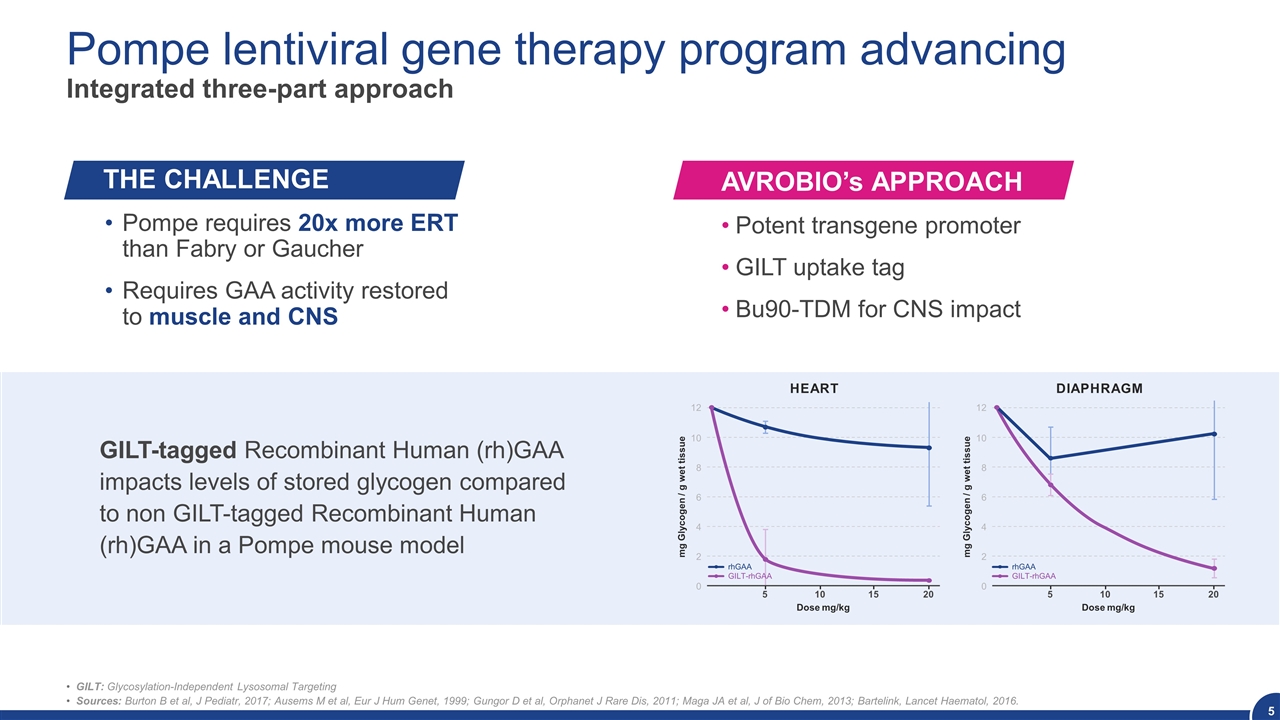
Pompe lentiviral gene therapy program advancing Integrated three-part approach GILT: Glycosylation-Independent Lysosomal Targeting Sources: Burton B et al, J Pediatr, 2017; Ausems M et al, Eur J Hum Genet, 1999; Gungor D et al, Orphanet J Rare Dis, 2011; Maga JA et al, J of Bio Chem, 2013; Bartelink, Lancet Haematol, 2016. THE CHALLENGE Pompe requires 20x more ERT than Fabry or Gaucher Requires GAA activity restored to muscle and CNS AVROBIO’s APPROACH Potent transgene promoter GILT uptake tag Bu90-TDM for CNS impact mg Glycogen / g wet tissue 2 4 6 8 10 12 Dose mg/kg 0 5 10 15 20 HEART GILT-rhGAA rhGAA mg Glycogen / g wet tissue 2 4 6 8 10 12 Dose mg/kg 0 5 10 15 20 DIAPHRAGM GILT-rhGAA rhGAA GILT-tagged Recombinant Human (rh)GAA impacts levels of stored glycogen compared to non GILT-tagged Recombinant Human (rh)GAA in a Pompe mouse model
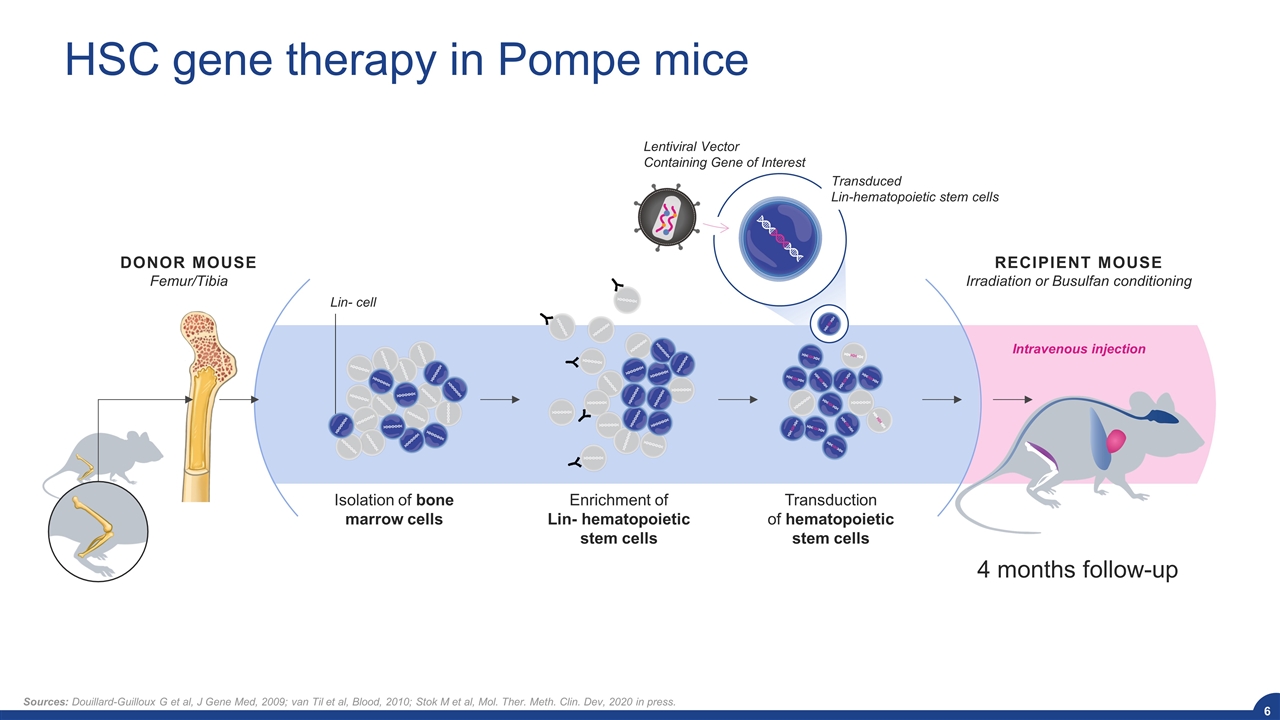
Intravenous injection Lentiviral Vector Containing Gene of Interest Transduced Lin-hematopoietic stem cells HSC gene therapy in Pompe mice Enrichment of Lin- hematopoietic stem cells DONOR MOUSE Femur/Tibia RECIPIENT MOUSE Irradiation or Busulfan conditioning Isolation of bone marrow cells Transduction of hematopoietic stem cells Lin- cell 4 months follow-up Sources: Douillard-Guilloux G et al, J Gene Med, 2009; van Til et al, Blood, 2010; Stok M et al, Mol. Ther. Meth. Clin. Dev, 2020 in press.
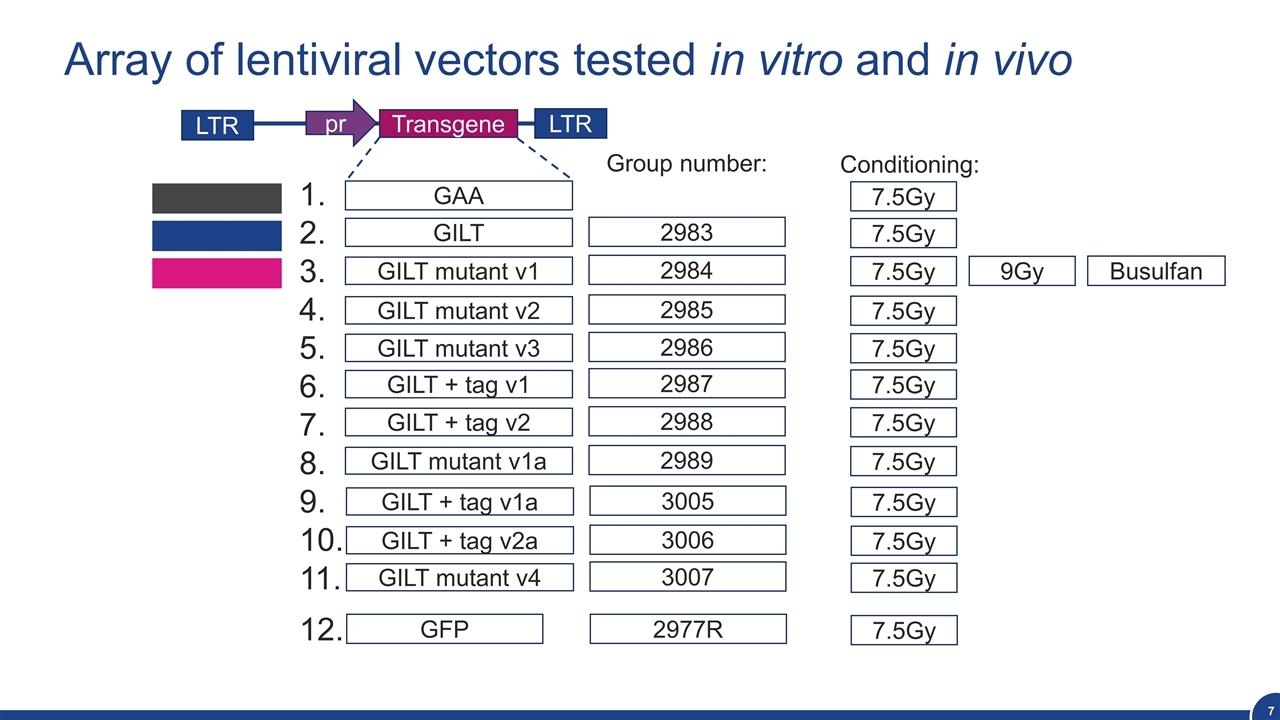
1. 2. 3. 4. 5. 6. 7. 8. 9. 10. 11. 12. GAA GILT mutant v1 GILT mutant v2 GILT mutant v3 GILT + tag v1 GILT + tag v2 GILT mutant v4 GFP GILT mutant v1a GILT + tag v1a GILT + tag v2a GILT LTR LTR pr Transgene 2984 2985 2986 2987 2988 3007 2977R 2989 3005 3006 2983 Group number: 7.5Gy 7.5Gy 7.5Gy 7.5Gy 7.5Gy 7.5Gy 7.5Gy 7.5Gy 7.5Gy 7.5Gy 7.5Gy 7.5Gy Conditioning: 9Gy Busulfan Array of lentiviral vectors tested in vitro and in vivo
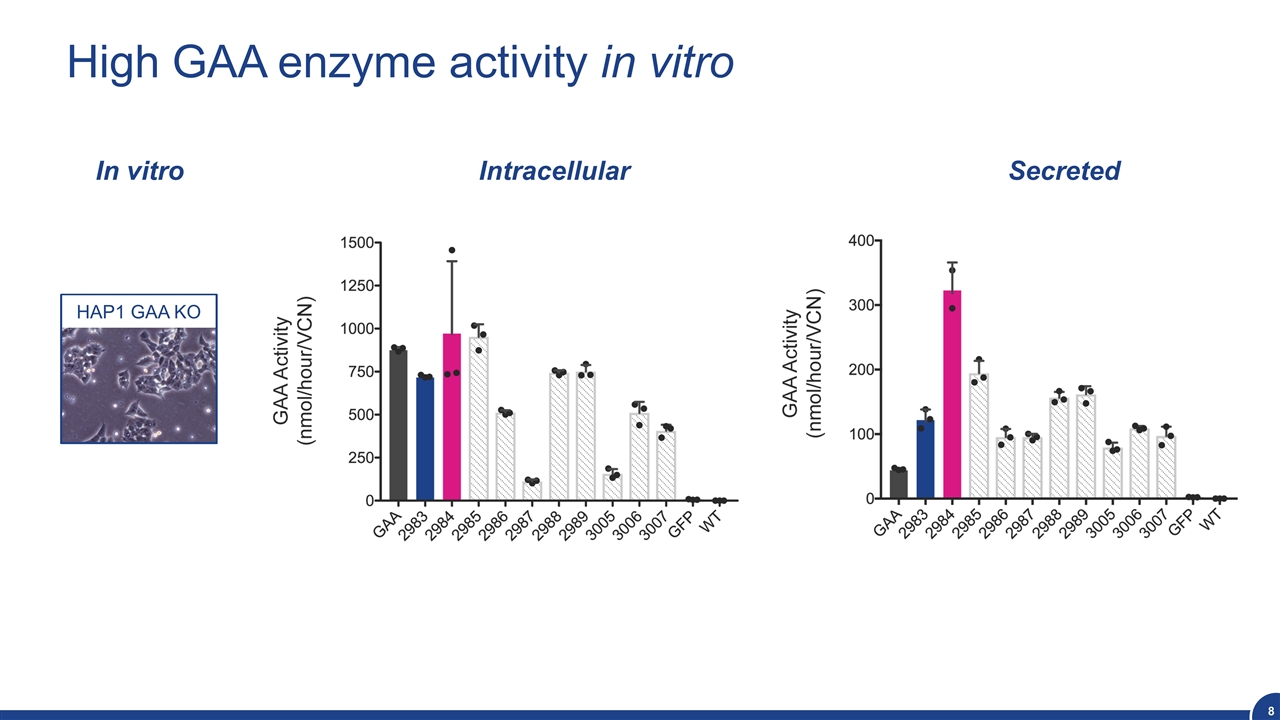
High GAA enzyme activity in vitro In vitro Intracellular Secreted HAP1 GAA KO
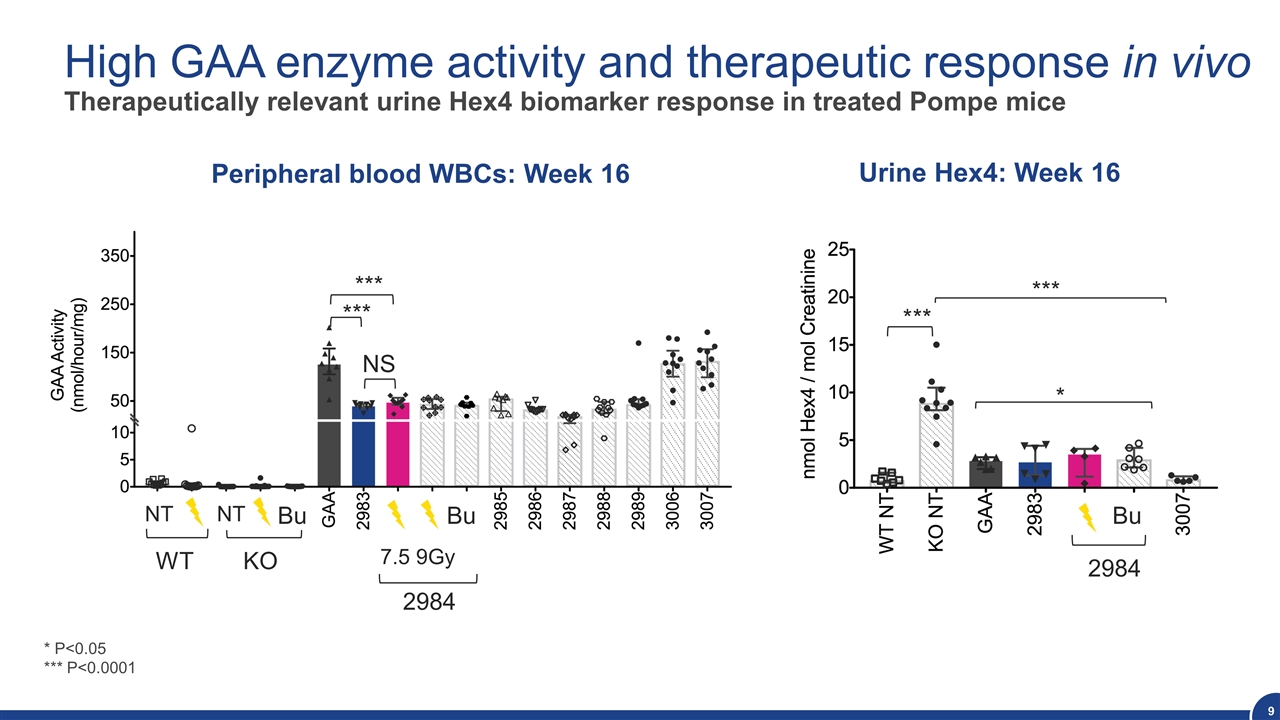
Urine Hex4: Week 16 Peripheral blood WBCs: Week 16 WT KO 2984 Bu NT NT Bu NS * * 7.5 9Gy * P<0.05 *** P<0.0001 2984 Bu *** * * High GAA enzyme activity and therapeutic response in vivo Therapeutically relevant urine Hex4 biomarker response in treated Pompe mice ** ** ** ***
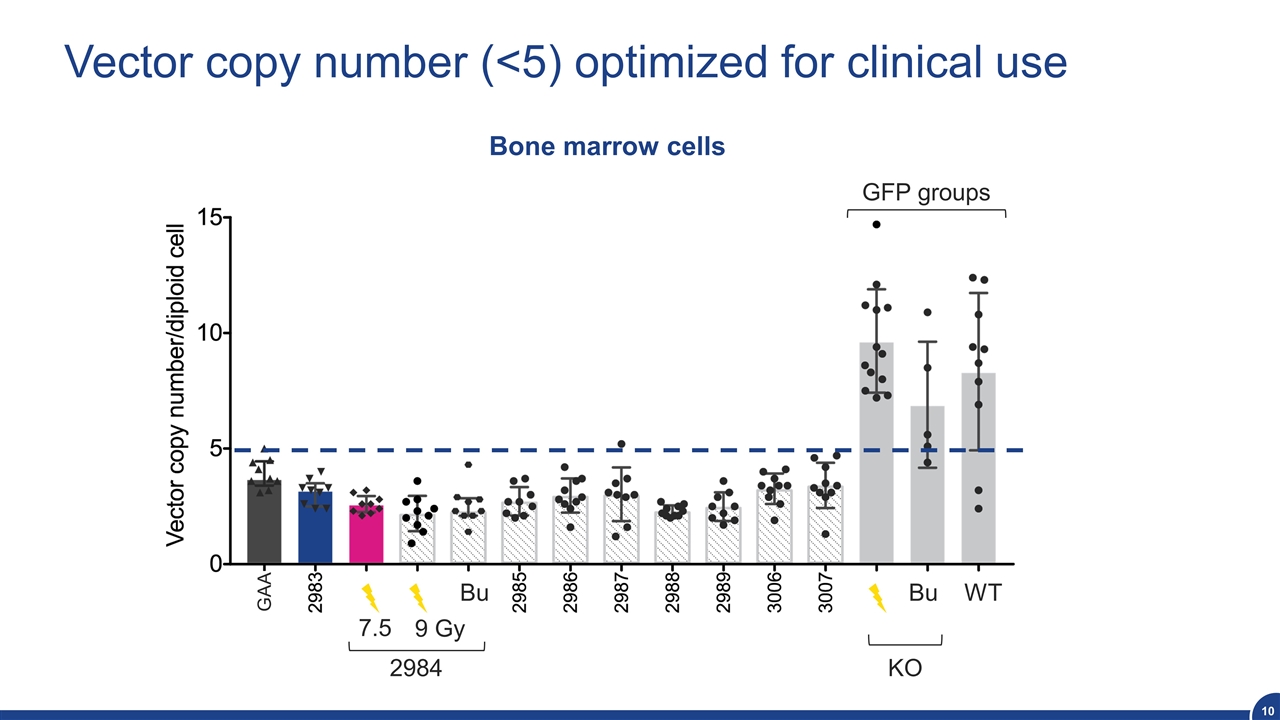
Vector copy number (<5) optimized for clinical use KO Bu Bu WT GFP groups 2984 7.5 9 Gy Bone marrow cells GAA
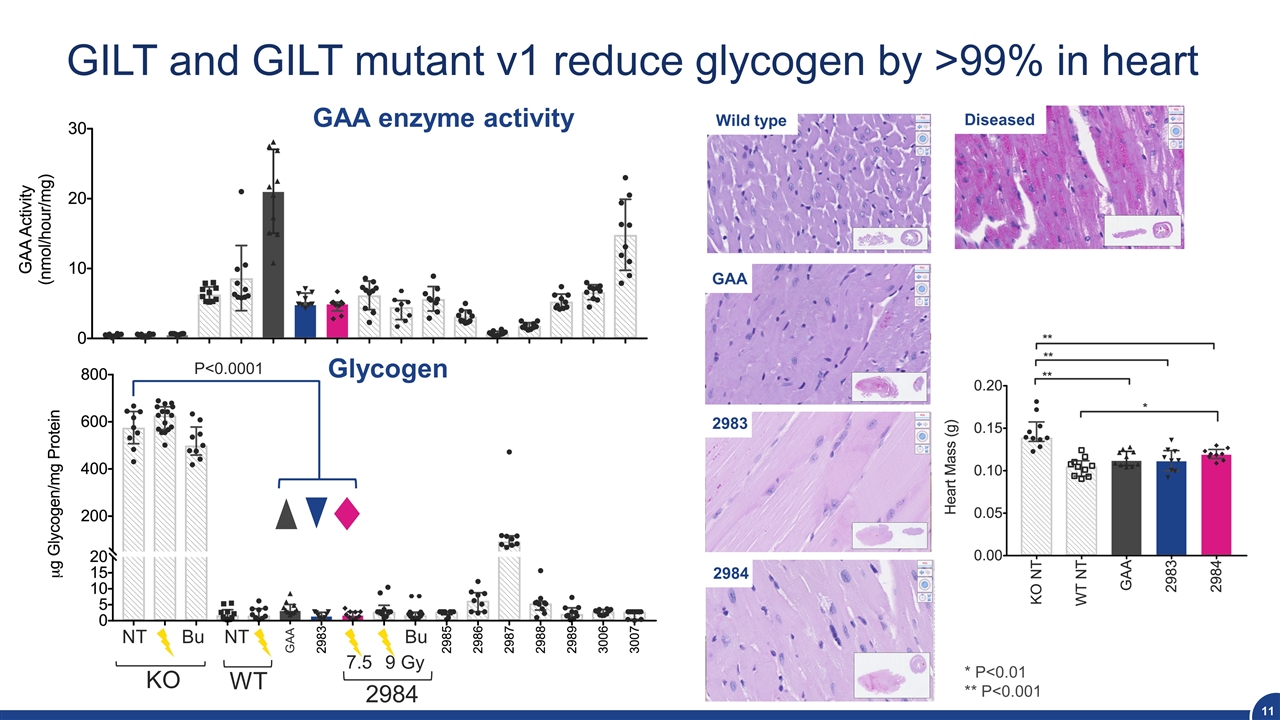
GAA enzyme activity Wild type Glycogen KO Bu NT WT NT 2984 Bu 7.5 P<0.0001 9 Gy GAA 2983 2984 Diseased GILT and GILT mutant v1 reduce glycogen by >99% in heart GAA * P<0.01 ** P<0.001
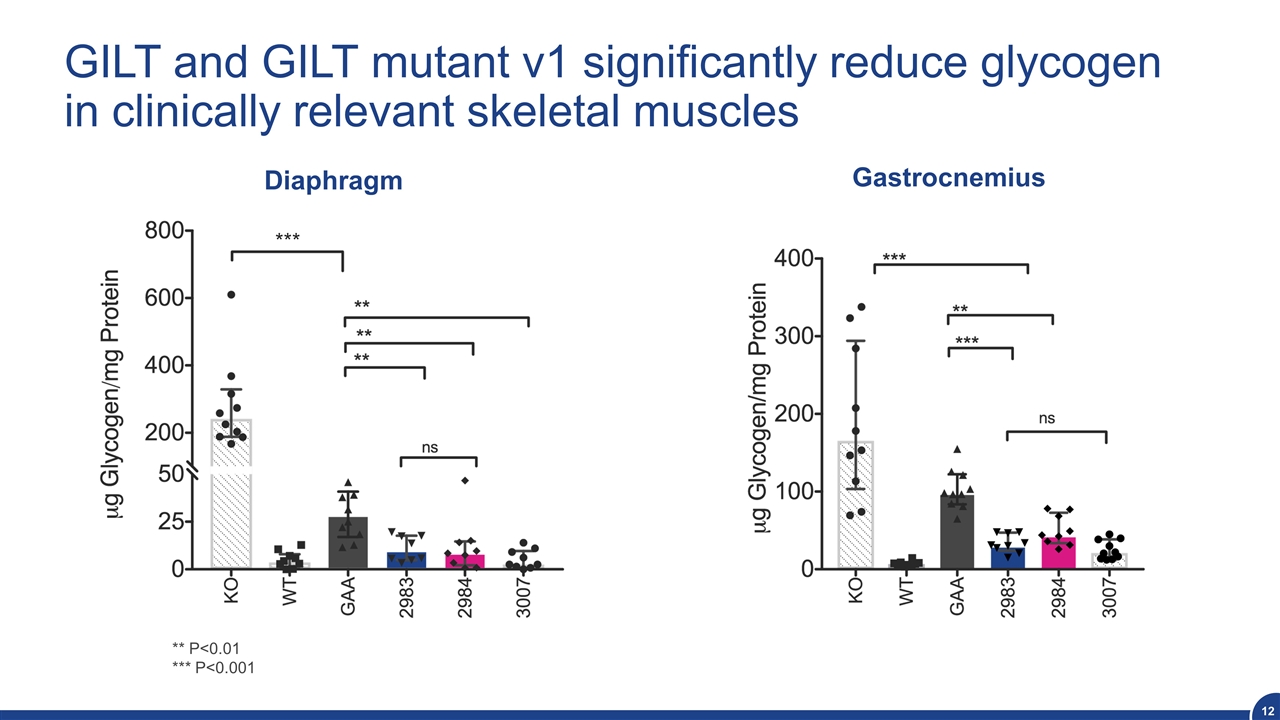
Diaphragm Gastrocnemius ** P<0.01 *** P<0.001 GILT and GILT mutant v1 significantly reduce glycogen in clinically relevant skeletal muscles * ***
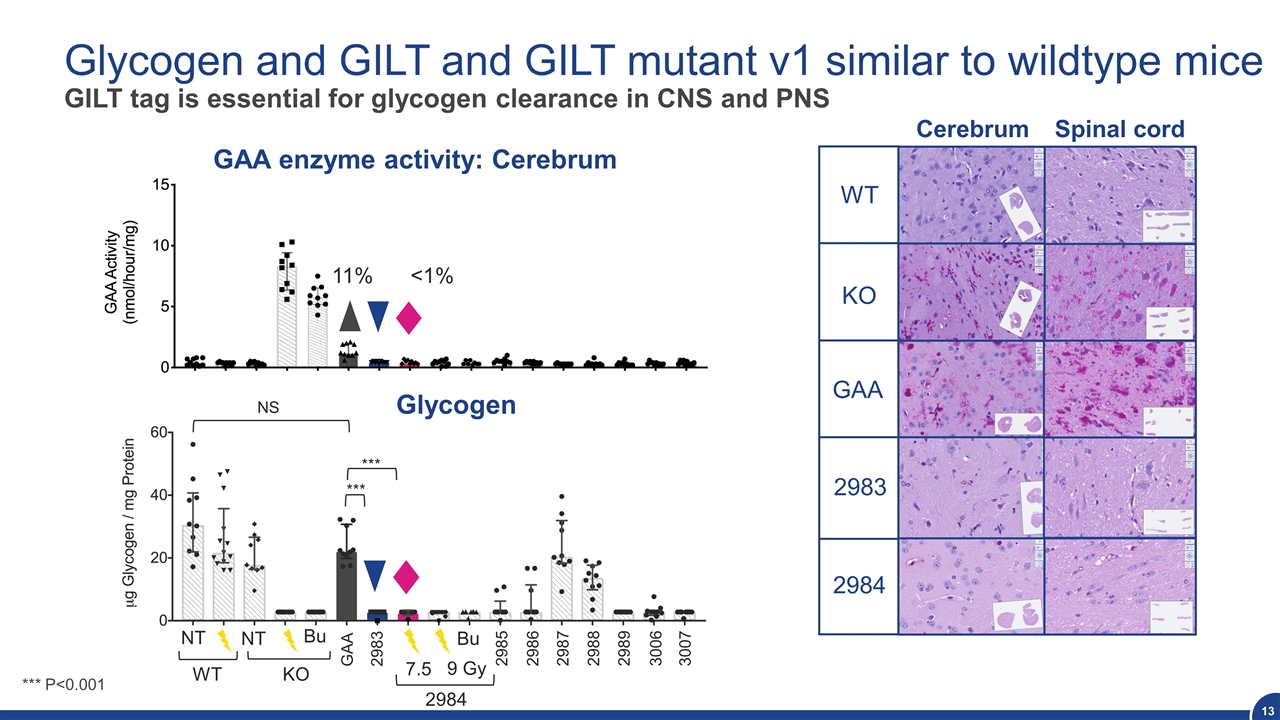
11% WT KO 2984 Bu NT NT Bu 7.5 9 Gy NS *** *** Glycogen and GILT and GILT mutant v1 similar to wildtype mice GILT tag is essential for glycogen clearance in CNS and PNS GAA enzyme activity: Cerebrum WT GAA KO 2984 2983 Cerebrum *** P<0.001 Spinal cord <1% GAA 2983 2985 2986 2987 2988 3007 3006 2989 Glycogen
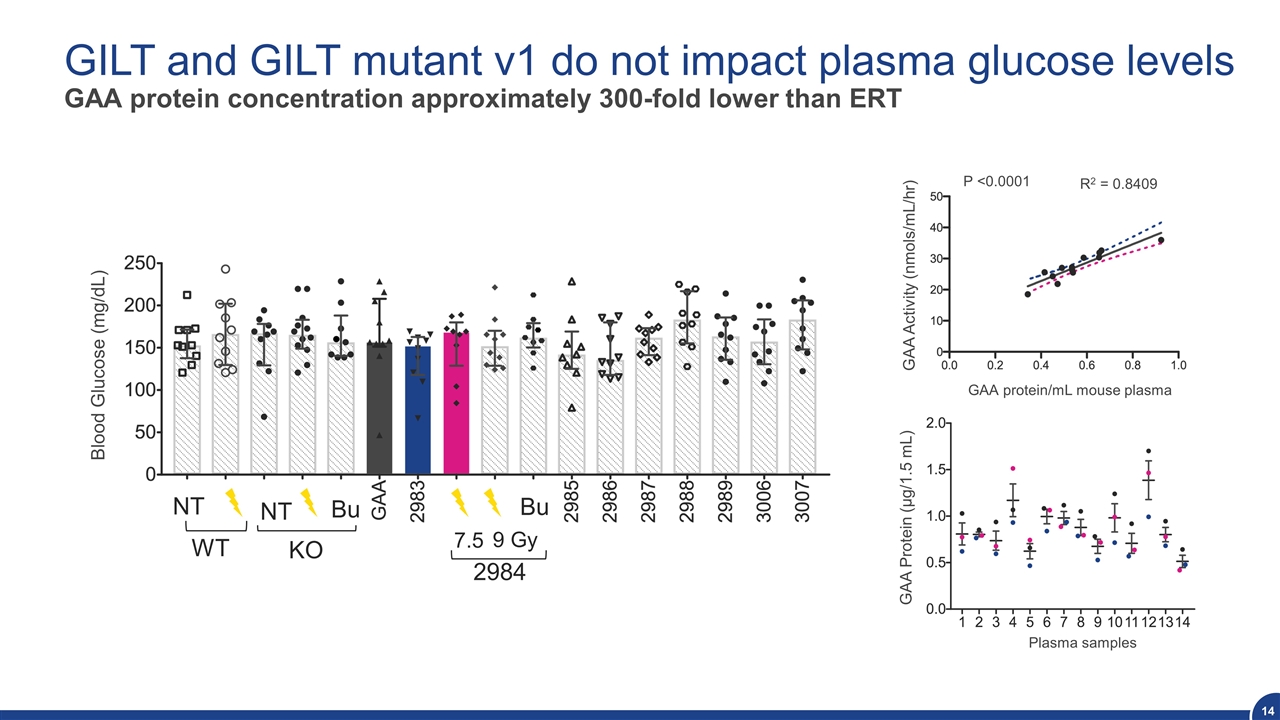
Plasma samples KO Bu NT WT NT 2984 Bu 7.5 9 Gy Blood Glucose (mg/dL) R2 = 0.8409 P <0.0001 GAA Activity (nmols/mL/hr) GILT and GILT mutant v1 do not impact plasma glucose levels GAA protein concentration approximately 300-fold lower than ERT GAA Protein (µg/1.5 mL) GAA protein/mL mouse plasma
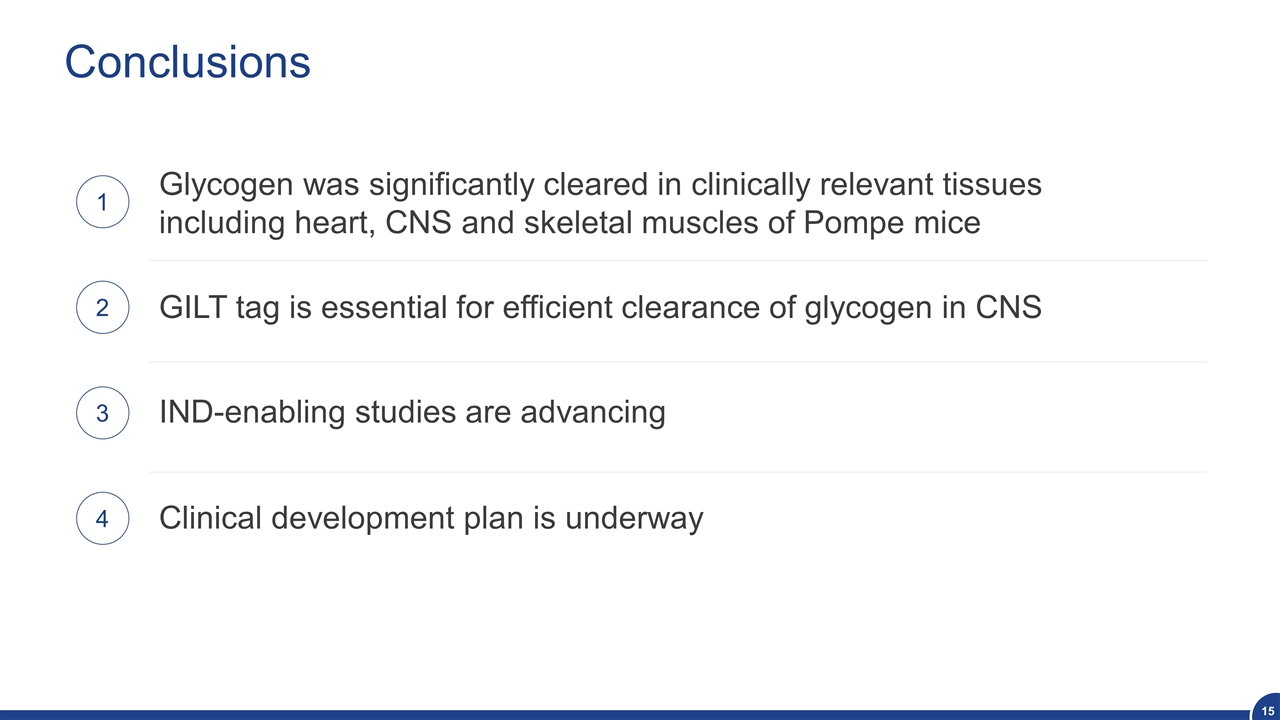
Conclusions Clinical development plan is underway 1 2 3 4 Glycogen was significantly cleared in clinically relevant tissues including heart, CNS and skeletal muscles of Pompe mice GILT tag is essential for efficient clearance of glycogen in CNS IND-enabling studies are advancing
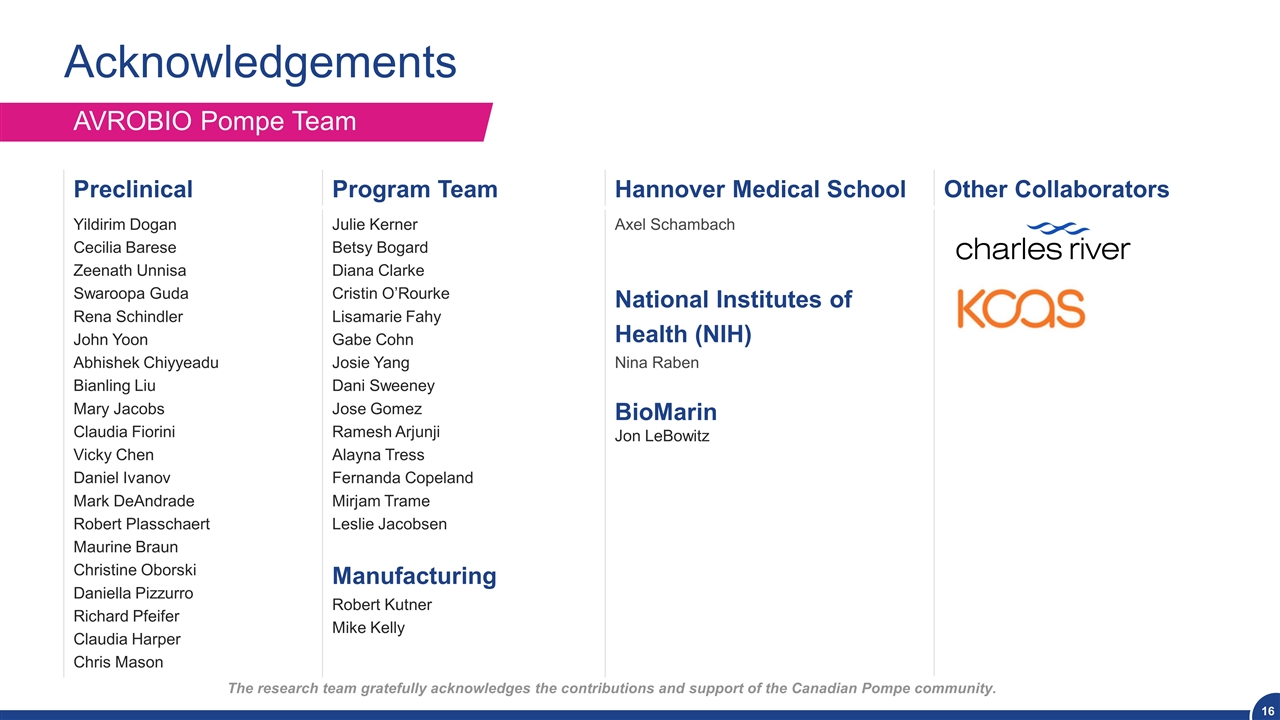
Acknowledgements Preclinical Program Team Hannover Medical School Other Collaborators Yildirim Dogan Cecilia Barese Zeenath Unnisa Swaroopa Guda Rena Schindler John Yoon Abhishek Chiyyeadu Bianling Liu Mary Jacobs Claudia Fiorini Vicky Chen Daniel Ivanov Mark DeAndrade Robert Plasschaert Maurine Braun Christine Oborski Daniella Pizzurro Richard Pfeifer Claudia Harper Chris Mason Julie Kerner Betsy Bogard Diana Clarke Cristin O’Rourke Lisamarie Fahy Gabe Cohn Josie Yang Dani Sweeney Jose Gomez Ramesh Arjunji Alayna Tress Fernanda Copeland Mirjam Trame Leslie Jacobsen Manufacturing Robert Kutner Mike Kelly Axel Schambach National Institutes of Health (NIH) Nina Raben BioMarin Jon LeBowitz AVROBIO Pompe Team The research team gratefully acknowledges the contributions and support of the Canadian Pompe community.
